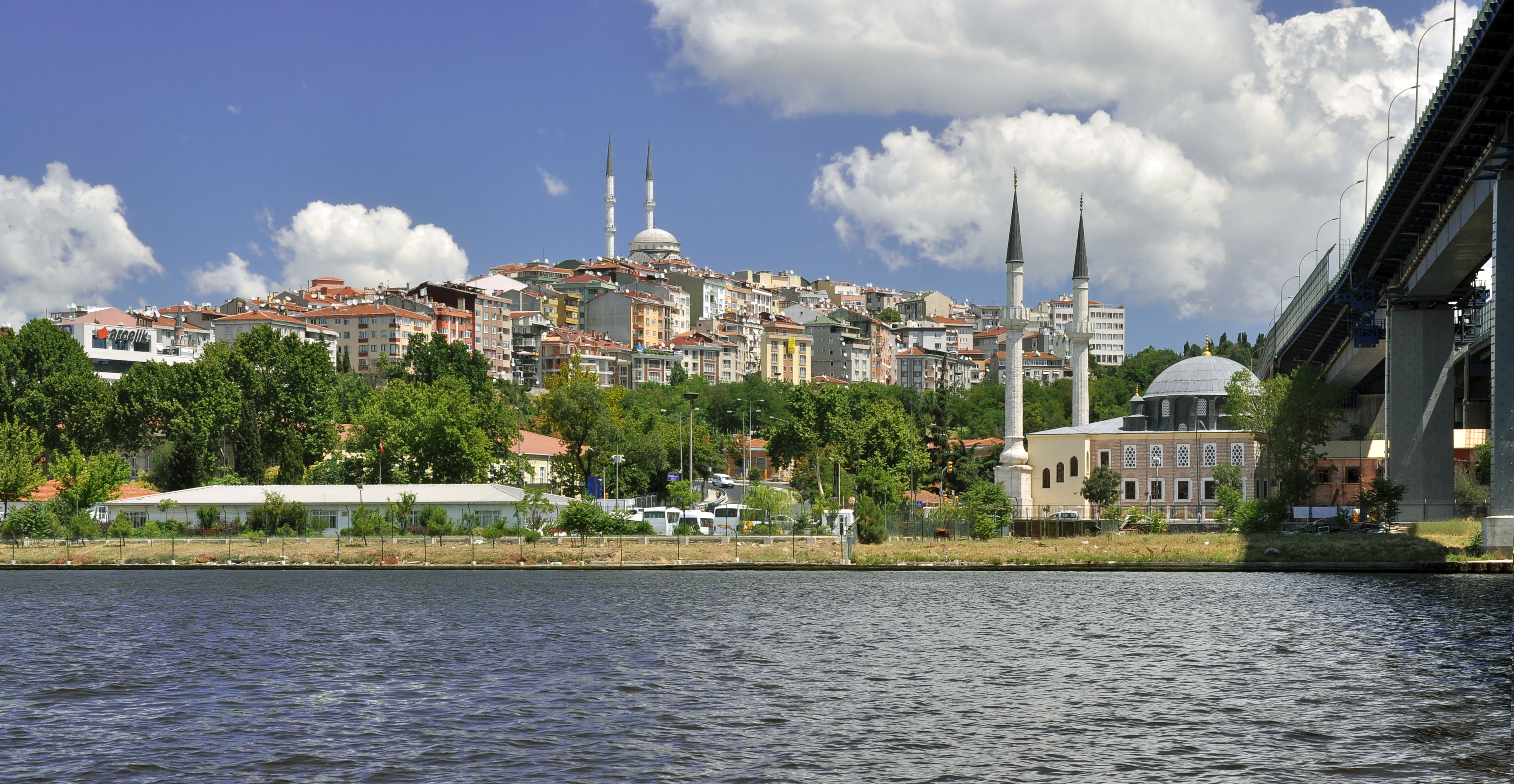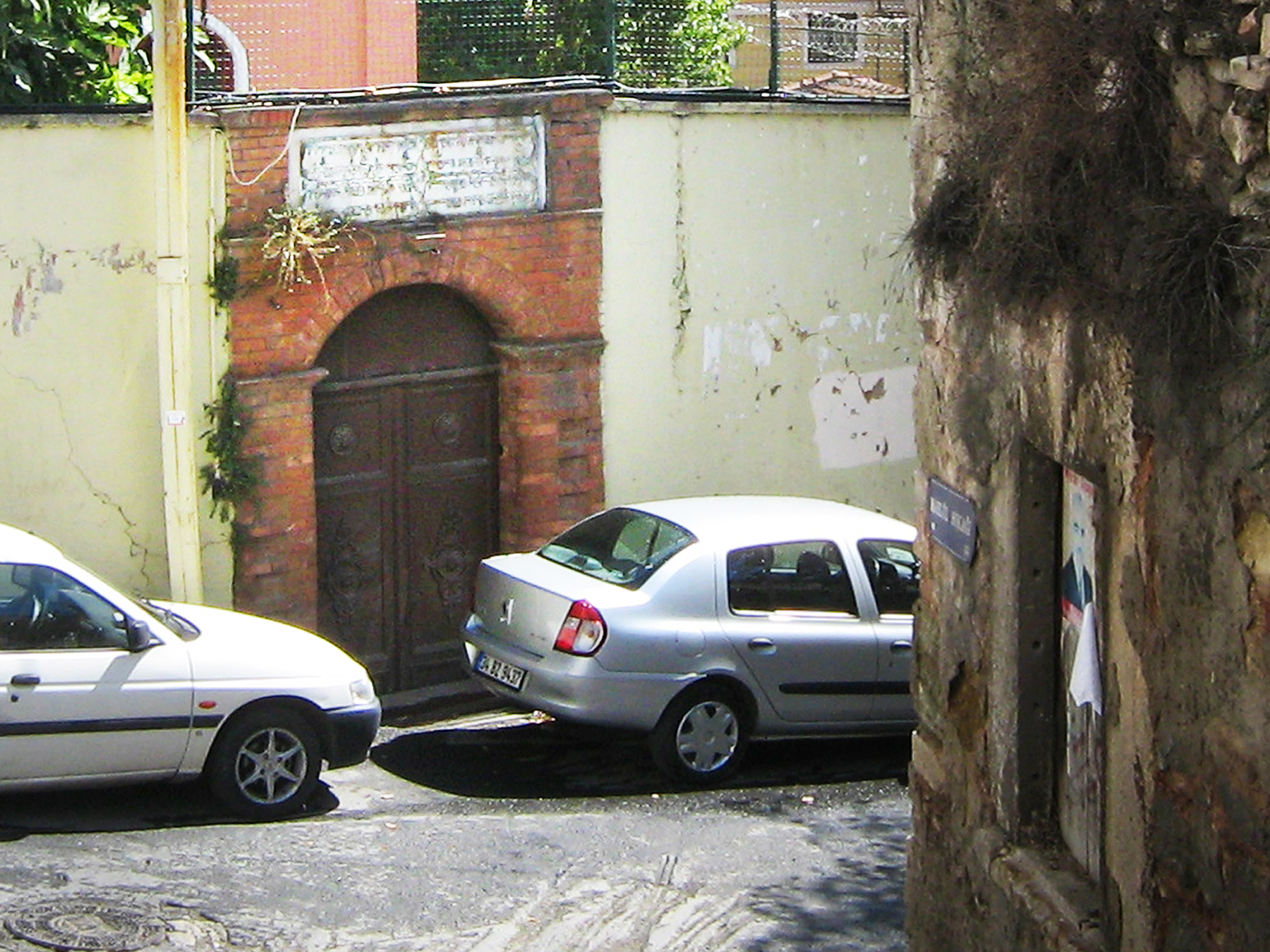|
Hasköy, Beyoğlu
Hasköy is a trading and residential district on the northern bank of the Golden Horn in Beyoğlu, Istanbul, Turkey. It includes the neighbourhoods of Keçeci Piri, Piri Paşa, and Halıcıoğlu, and parts of Camiikebir and Sütlüce. Immediately to the south lies Kasımpaşa. Hasköy means "imperial village" in Turkish, a reference to the pavilions and gardens belonging to the Ottoman sultan and his court that once lined the shore here. Armenian speakers knew it as Khasgiugh (Խասգիւղ), "khas" reflecting the older pronunciation of the Turkish word "has" and "giugh" being the Armenian word for village. The Golden Horn ferry has a stop at Hasköy which links the district to Üsküdar, Karaköy, Kasımpaşa, Fener, Balat, Ayvansaray, Eyüp and Sütlüce. It is also linked by minibuses to the Metro stop at Şişehane. The E5 highway runs right across the northern edge of Hasköy. History In the late fifteenth century, Jews expelled from Spain and Portugal took refu ... [...More Info...] [...Related Items...] OR: [Wikipedia] [Google] [Baidu] |
Golden Horn
The Golden Horn ( tr, Altın Boynuz or ''Haliç''; grc, Χρυσόκερας, ''Chrysókeras''; la, Sinus Ceratinus) is a major urban waterway and the primary inlet of the Bosphorus in Istanbul, Turkey. As a natural estuary that connects with the Bosphorus Strait at the point where the strait meets the Sea of Marmara, the waters of the Golden Horn help define the northern boundary of the peninsula constituting "Old Istanbul" (ancient Byzantium and Constantinople), the tip of which is the promontory of Sarayburnu, or Seraglio Point. This estuarial inlet geographically separates the historic center of Istanbul from the rest of the city, and forms a horn-shaped, sheltered harbor that in the course of history has protected Greek, Roman, Byzantine, Ottoman and other maritime trade ships for thousandsBBC: "Istanbul ... [...More Info...] [...Related Items...] OR: [Wikipedia] [Google] [Baidu] |
Sütlüce, Beyoğlu
Sütlüce is a neighbourhood on the eastern bank of the Golden Horn in the Beyoğlu district of Istanbul, Turkey. It faces Eyüp, one of Istanbul's most holy sites, across the water. Immediately north of Sütlüce are Alibeyköy and Kağıthane, once, as the Sweet Waters of Europe, renowned beauty spots on two streams that flowed into the Golden Horn. Immediately to the south is Hasköy. In the 19th and early 20th centuries Sütlüce suffered from the decision to turn what had once been a famously beautiful area into an industrial zone. Belatedly the first two decades of the 20th century saw it redeveloped with a touristic future in mind. Its most prominent monument is the watersidHalıc Conference Centrein front of which replicas of the old caiques that used to ply the Golden Horn wait to carry tourists across to Eyüp on the opposite shore. A modern promenade leads north to Miniaturk where many of Turkey's best-known attractions have been reproduced in miniature. The Golden ... [...More Info...] [...Related Items...] OR: [Wikipedia] [Google] [Baidu] |
Mayor Synagogue, Istanbul
Mayor Synagogue is a former synagogue in the Hasköy district of Beyoğlu, Istanbul, Turkey. History According to historian Lorans Tanatar Baruh, the synagogue was built in the Byzantine era and was called Mayor because it was the largest in the neighborhood. Another historian claims the synagogue was built 300 to 500 years ago by Jews from Majorca. (According to historian Jak Deleon, in the 1950s there was a Mayorka Synagogue in Hasköy.) The synagogue building is now used as storage space, workshops, and a billiard parlor. In September 2009, artist Serge Spitzer chose this site for his installation ''Molecular Istanbul''.Utku. See also *History of the Jews in Turkey *List of synagogues in Turkey *Mayor Synagogue (Bursa) Mayor Synagogue (or Synagogue Mejor) is a synagogue on Arap Şükrü (Sakarya) Street in Bursa, Turkey. It was founded by Jews who settled in the Ottoman Empire after being Alhambra Decree, expelled from Majorca. The present building was built in ... Re ... [...More Info...] [...Related Items...] OR: [Wikipedia] [Google] [Baidu] |
Karaite Synagogue (Istanbul)
The Karaite Synagogue (Hebrew: ''בית הכנסת הקראי באיסטנבול;'' tr, Karahim Sinagogu, Karaim Sinagogu, Karayim Sinagogu) is a Kenesa in the Hasköy district of Beyoğlu, Istanbul, Turkey. The building's date of construction is unclear; it may date to Byzantine times. The building was in ruins in the sixteenth century; it was repaired in 1536, burned in 1729, rebuilt, burned again in 1774, rebuilt between 1776 and 1780, restored in 1842, and burned again in 1918. The Karaite congregation of the town also has their own cemetery.TAU Documentation Project, Karaite Cemetery. 2002 The trust behind these Institutions is called ''Hasköy Türk Karaim Musevi Sinagogu Vakfı''. Today the Kenesa functions only at the Karaite Pesach. Contact to the congregation can be built via the Turkish Chief Rabbinate or the Quincentennial Foundation Museum of Turkish Jews. See also * Constantinopolitan Karaites * History of the Jews in Turkey *Karaite Judaism Karaite Judais ... [...More Info...] [...Related Items...] OR: [Wikipedia] [Google] [Baidu] |
Maalem Synagogue
Maalem Synagogue is a synagogue located on the slopes overlooking the Golden Horn near the Jewish old age home in the Hasköy district of Istanbul, Turkey. It is the only remaining open synagogue in an area that once had many Jewish residents. The synagogue is open for visits only during weekdays. Shabbat services are held regularly. See also * History of the Jews in Turkey * List of synagogues in Turkey This is a list of notable synagogues in Turkey. Istanbul {, class="wikitable sortable" style="border-collapse: collapse;" , - !Name !Founded !class="unsortable", Image 1 !class="unsortable", Image 2 !class="unsortable", Image 3 , - , Ahrida Syna ... References and notes External links Chief Rabbinate of TurkeyShalom Newspaper - The main Jewish newspaper in Turkey Synagogues in Istanbul Golden Horn Beyoğlu {{Turkey-synagogue-stub ... [...More Info...] [...Related Items...] OR: [Wikipedia] [Google] [Baidu] |
Greeks In Turkey
) constitute a small population of Greek and Greek-speaking Eastern Orthodox Christians who mostly live in Istanbul, as well as on the two islands of the western entrance to the Dardanelles: Imbros and Tenedos ( tr, Gökçeada and ''Bozcaada''). They are the remnants of the estimated 200,000 Greeks who were permitted under the provisions of the Convention Concerning the Exchange of Greek and Turkish Populations to remain in Turkey following the 1923 population exchange, which involved the forcible resettlement of approximately 1.5 million Greeks from Anatolia and East Thrace and of half a million Turks from all of Greece except for Western Thrace. After years of persecution (e.g. the Varlık Vergisi and the Istanbul Pogrom), emigration of ethnic Greeks from the Istanbul region greatly accelerated, reducing the Greek minority population from 119,822 before the attack to about 7,000 by 1978. The 2008 figures released by the Turkish Foreign Ministry places the current number of ... [...More Info...] [...Related Items...] OR: [Wikipedia] [Google] [Baidu] |
Armenians In Turkey
Armenians in Turkey ( tr, Türkiye Ermenileri; hy, Թուրքահայեր, also Թրքահայեր, "Turkish Armenians"), one of the indigenous peoples of Turkey, have an estimated population of 50,000 to 70,000, down from a population of over 2 million Armenians between the years 1914 and 1921. Today, the overwhelming majority of Turkish Armenians are concentrated in Istanbul. They support their own newspapers, churches and schools, and the majority belong to the Armenian Apostolic faith and a minority of Armenians in Turkey belong to the Armenian Catholic Church or to the Armenian Evangelical Church. Until the Armenian genocide of 1915, most of the Armenian population of Turkey (then the Ottoman Empire) lived in the eastern parts of the country that Armenians call Western Armenia (roughly corresponding to the modern Eastern Anatolia Region). History Armenians living in Turkey today are a remnant of what was once a much larger community that existed for thousands of years ... [...More Info...] [...Related Items...] OR: [Wikipedia] [Google] [Baidu] |
New Mosque (Istanbul)
The New Mosque ( tr, Yeni Cami}, , originally named the Valide Sultan Mosque, tr, Valide Sultan Camii) and later New Valide Sultan Mosque ( tr, Yeni Valide Sultan Camii) after its partial reconstruction and completion between 1660 and 1665, is an Ottoman imperial mosque located in the Eminönü quarter of Istanbul, Turkey. It is situated on the Golden Horn, at the southern end of the Galata Bridge. The mosque is an example of the Sultanate of Women period in Ottoman Empire. History Valide Sultan Mosque The construction of the mosque began in 1597. It was ordered by Safiye Sultan, who was the wife of Sultan Murad III and later Valide Sultan (Queen Mother) of Sultan Mehmed III. She ordered the mosque in her capacity as ''Valide Sultan'', two years after Mehmed III's ascension to the Ottoman throne in 1595, hence the original formal name "Valide Sultan Mosque". The original architect was Davut Ağa, an apprentice to the great Mimar Sinan. However, Davut Ağa died in ... [...More Info...] [...Related Items...] OR: [Wikipedia] [Google] [Baidu] |
Eminönü
Eminönü is a predominantly commercial waterfront area of Istanbul within the Fatih district near the confluence of the Golden Horn with the southern entrance of the Bosphorus strait and the Sea of Marmara. It is connected to Karaköy (historic Galata) via the Galata Bridge across the Golden Horn. It was administered as part of the Sultanahmet district from 1928 to 2009 when Sultanahmet was absorbed into Fatih. Eminönü's busy main square is overlooked by the New Mosque (Yeni Cami in Turkish) and the Spice Bazaar (Mısır Çarşısı in Turkish). Eminönü is an important transport hub. Several ferries have terminals along the Eminönü waterfront and the T1 tram has a stop here. To the southeast Eminönü runs into Sirkeci, while to the northwest it merges with the shopping areas of Tahtakale and Küçükpazar. Inland from Emiõnü is another shopping district, Mahmutpaşa. In Turkish, Eminönü means 'in front of justice' ('emin' meaning 'justice' and 'önü' meaning ... [...More Info...] [...Related Items...] OR: [Wikipedia] [Google] [Baidu] |
Portugal
Portugal, officially the Portuguese Republic ( pt, República Portuguesa, links=yes ), is a country whose mainland is located on the Iberian Peninsula of Southwestern Europe, and whose territory also includes the Atlantic archipelagos of the Azores and Madeira. It features the westernmost point in continental Europe, and its Iberian portion is bordered to the west and south by the Atlantic Ocean and to the north and east by Spain, the sole country to have a land border with Portugal. Its two archipelagos form two autonomous regions with their own regional governments. Lisbon is the capital and largest city by population. Portugal is the oldest continuously existing nation state on the Iberian Peninsula and one of the oldest in Europe, its territory having been continuously settled, invaded and fought over since prehistoric times. It was inhabited by pre-Celtic and Celtic peoples who had contact with Phoenicians and Ancient Greek traders, it was ruled by the Ro ... [...More Info...] [...Related Items...] OR: [Wikipedia] [Google] [Baidu] |
Spain
, image_flag = Bandera de España.svg , image_coat = Escudo de España (mazonado).svg , national_motto = ''Plus ultra'' (Latin)(English: "Further Beyond") , national_anthem = (English: "Royal March") , image_map = , map_caption = , image_map2 = , capital = Madrid , coordinates = , largest_city = Madrid , languages_type = Official language , languages = Spanish , ethnic_groups = , ethnic_groups_year = , ethnic_groups_ref = , religion = , religion_ref = , religion_year = 2020 , demonym = , government_type = Unitary parliamentary constitutional monarchy , leader_title1 = Monarch , leader_name1 = Felipe VI , leader_title2 = Prime Minister , leader_name2 = Pedro Sánchez , legislature = C ... [...More Info...] [...Related Items...] OR: [Wikipedia] [Google] [Baidu] |







